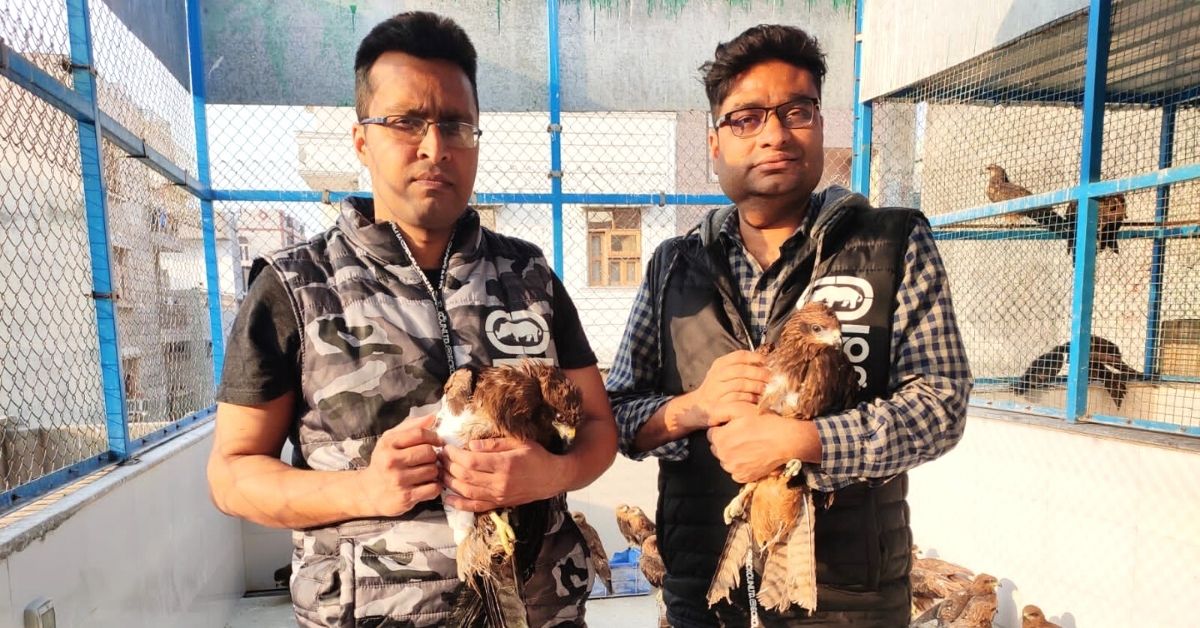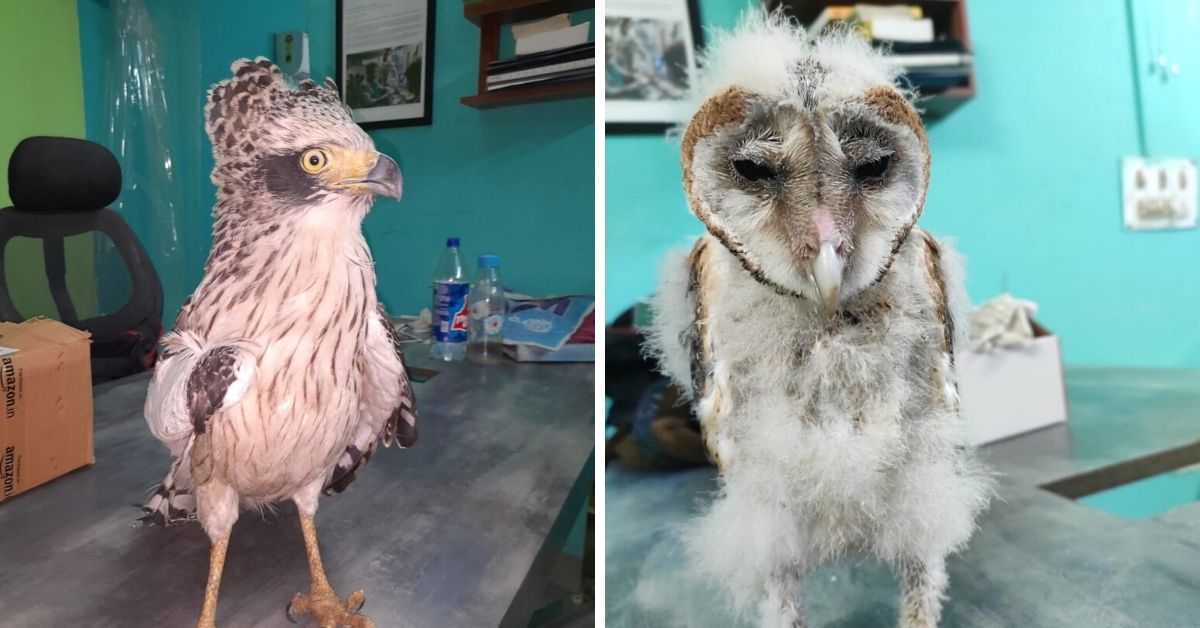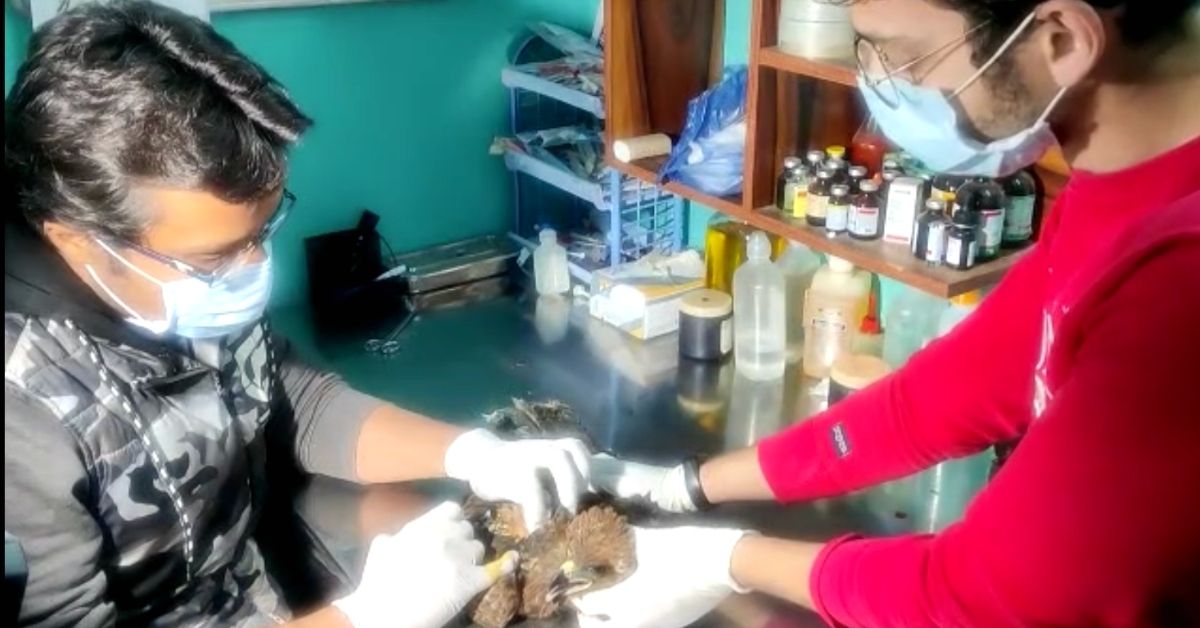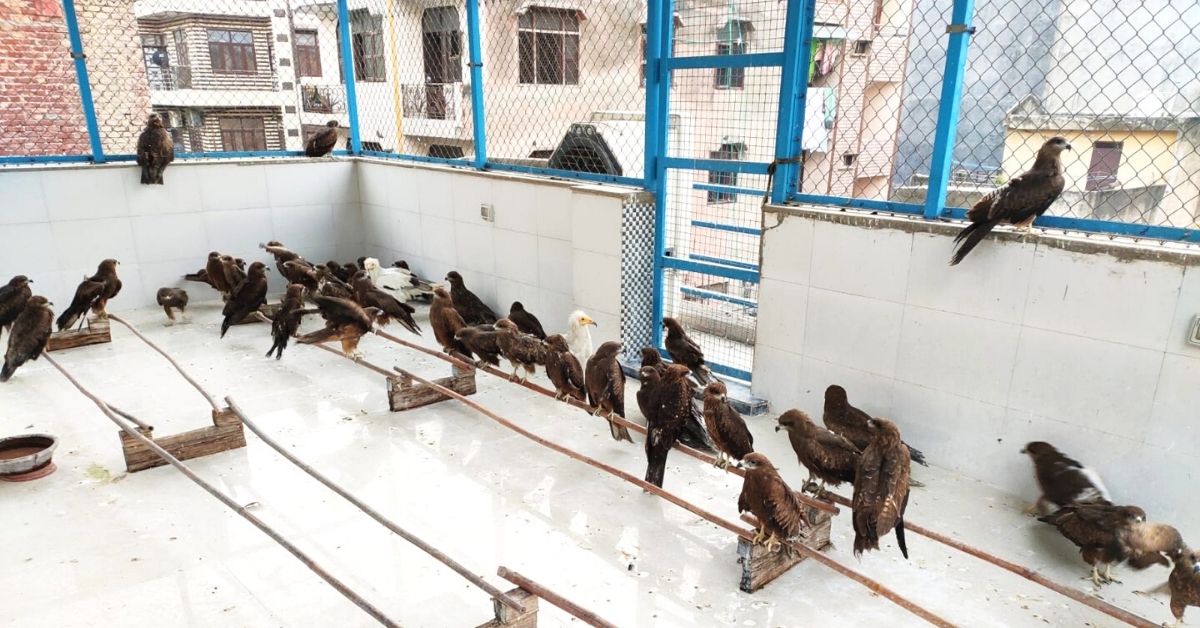From a Makeshift Clinic at Home, Siblings Rescue 23,000 Birds Over 20 Years
Nadeem Shehzad and Mohammad Saud run Wildlife Rescue, an NGO and clinic that helps rescue and treat injured birds across Delhi

In the 90s, when Delhi-based brothers Nadeem and Mohammad Saud were in their late teens, they came across an injured kite. The bird was entangled in a manjha, and lay on the side of the road.
This was the first time that the duo saw how birds fall prey to injuries and even death due to excessive kite flying. Manjhas, which are synthetic kite strings coated in metal or glass, can be fatal to birds flying in the sky — they can lose their wings, leaving them permanently grounded.
Nadeem says that after being injured, many of these birds end up in the gutters or on the roadside, where they are run over by vehicles or bleed to death. Otherwise, the trauma of being unable to fly is soon followed by death.
Despite the fact that Chinese manjhas were banned by the government in 2017, conservationists end up rescuing thousands of birds from their clutches every year.
When the brothers came across the injured kite, they picked it up and rushed to the hospital. But they were met with refusal no matter where they went, recalls Nadeem, now 44. “We knocked on the doors of several veterinary clinics. They told us, ‘We do not treat carnivorous birds’,” he tells The Better India.

Unable to find a solution, the brothers returned the bird to the spot where they found it. But since then, they have come a long way. From their basement, they run a makeshift veterinary operation centre for injured and maimed birds, helping save thousands of birds to date.
Navigating a death trap
After their first encounter with the kite, Nadeem and Saud spent the next few years picking up other injured birds and placing them in safe places that will prevent them from being run over or choking in a gutter. But the fate of these birds would remain unknown. “We kept looking for help, but couldn’t find any,” Nadeem says.
In 2003, the siblings found another kite in a parking lot. This time, they decided to take a different approach. “We took it to a veterinarian who had treated our uncle’s dog. He agreed to help us, and we were able to save the bird,” he says.
From then on, every injured bird they found was taken to the vet.
“Over time, the number of birds increased to the extent that we needed to buy a cage. We released the birds on the rooftop during the day and put them in the cage after dark. Our neighbours appreciated our efforts and started pitching in to help,” Nadeem says.
He adds that the number of injured birds grew so high that they eventually converted their roof into an enclosure.
“We rescued almost 400 birds, including owls, hawks, water hens, and egrets between 2003 and 2010. In 2010, we decided to set up an NGO, Wildlife Rescue, to take up the cause,” he says.
Since then, the brothers say they have saved over 23,000 birds from more than 100 species. “We cater to at least 40 species each year, and have 100 healing birds at our rooftop on any given day,” he says.

Nadeem and Saud also collect birds from all hospitals in the surrounding areas. “We receive calls from locals, the Delhi Police, the fire service department, and civic body officials. They spot the birds and hand them over to us,” he says.
Nadeem notes that the rescued birds have all sorts of injuries or diseases. “At times, the cuts are minor. Otherwise, some birds sustain serious injuries. Some have gynaecological issues, such as eggs getting stuck while delivering. On other occasions, the chicks fall from the nest or juveniles get injured while learning how to fly,” he says.
He adds that the bird species who come in for treatment also vary with season. “The kite bird season starts from March, and there will be at least 500 injured kites in the next two months. The number of rescued hawk birds will increase more during mid-summer. The highest number of birds are injured in August, as the number of people flying kites peaks during Independence Day celebrations,” he says.
Nadeem says all the rescued birds are given balanced food with meat in their diet and treated by an expert veterinarian.
“Many birds recover and fly, while the birds with severe injuries feel highly stressed and die. Birds are psychologically vulnerable, and the trauma severely affects their health,” he says.
Protecting the ecosystem
While Nadeem and Saud’s cause is noble, they do not have any formal education in wildlife rescue. “We quit school in 1997 as our family’s financial condition could not allow us to study further. Our parents wanted us to revive their business, so we started working at our bathroom fittings shop,” Nadeem says.

Saud says, “We work for our social cause in our free time. We have a team of a part-time veterinarian, and two persons who tend the birds and take care of the paperwork.”
The duo often visit the US to receive training in and attend workshops on wildlife rescue.
“Wildlife rescue is entirely different from biology, and there is no formal course in India that addresses it. The US is one of the most advanced places and is known for its commendable work in bird rescue. We learn new techniques and train ourselves with help from experts at various wildlife centres across the country,” Saud explains.
For many years, the brothers were using their own savings to fuel operations. In recent years, donations from kind strangers have helped ease the financial burden.
Saud says, “We have been receiving donations for the past five years. These partly support our cause. Otherwise, it is challenging to manage all the expenses from our earnings. We have also registered an NGO, Raptor Rescue and Research Inc, to raise funds in the US and help our cause in India.”
But the 40-year-old notes that the NGO needs more financial support. “We run on a limited budget. Many bird rescue calls coming from far corners of Delhi go unanswered. We do not have an ambulance and cannot travel far to rescue birds. Many people who wish to help us cannot bring them to our house for logistical reasons. Some fear handling birds of prey. Reaching out to birds from far-flung areas is difficult.”
Saud adds that receiving donations will help them cater to a farther geographic area. “We can manage other daily issues and challenges at our end,” he says.
The siblings plan to establish a full-fledged hospital for birds. “We have rented a small clinic, and more donations will help us build an adequate facility for the birds. Talks are also underway to receive a piece of land from the government for the hospital,” he says.

Urvi Gupta, a Delhi-based researcher at Wildlife Institute of India (WII), says saving raptors is important, as they are threatened in multiple ways.
“Raptors occupy top trophic levels of the food web, and generally occur at low populations, making them susceptible to rapid anthropogenic changes and extinction. They predate and scavenge at various taxa, providing essential ecosystem services, which also makes them vulnerable to biomagnification of toxins,” she says.
Urvi adds that apart from being indicators of biodiversity and environment health, raptors play a pivotal role as cultural symbols strengthening human-animal relationships.
“In India, threats to raptors include habitat degradation, poisoning, hunting, trade for black magic and falconry, and electrocution. In cities, black kites face threat from the manjhas of paper-kites. Monitoring and conserving raptors will prevent disruption of critical ecosystem services, as well as maintain the health of the ecosystem and human well-being,” she adds.
Meanwhile, Nadeem hopes that people understand the seriousness of causing harm to birds for the sake of entertainment. “Injuries from the manjha cause unmeasurable damage to birds. I hope people reduce kite flying and help bring down the number of incidents,” he says.
To contribute to their cause, click here.
Source
Edited by Divya Sethu
If you found our stories insightful, informative, or even just enjoyable, we invite you to consider making a voluntary payment to support the work we do at The Better India. Your contribution helps us continue producing quality content that educates, inspires, and drives positive change.
Choose one of the payment options below for your contribution-
By paying for the stories you value, you directly contribute to sustaining our efforts focused on making a difference in the world. Together, let's ensure that impactful stories continue to be told and shared, enriching lives and communities alike.
Thank you for your support. Here are some frequently asked questions you might find helpful to know why you are contributing?


This story made me
-
97
-
121
-
89
-
167














